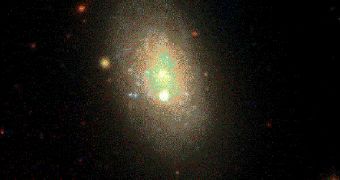The main question in astronomy today is related to identifying the places in the Universe where life has the most chances of appearing, developing and enduring. While many experts look for such places based on one theory or the other, some are trying to determine where life could never appear.
In other words, they are looking for dead zones in the Cosmos, where the probability of finding life is so minuscule that it's not even worth considering. There is a large variety of aspects to consider when trying to determine various characteristics of life outside our planet.
For instance, what experts really want to know, in addition to the places where life might survive, is whether it would leave a fossil record or not, its degree of complexity, as well as how common it is.
Astrobiologists have over recent years conducted a large variety of studies on the places that may or may not be suited for hosting life, and have compiled a list of spots where the necessary processes to underly life have little to zero chances of materializing.
In a paper entitled Rare Earth – Why Complex Life is Uncommon in the Universe, experts at the University of Washington list a number of zones where life could not possibly develop.
The list was compiles by professor of Geological sciences and curator of paleontology Peter D. Ward and professor of astronomy Donald Brownlee, who is also a member of the National Academy of Sciences (NAS).
Topping off the list is the early Universe, which was a very brutal place. Energetic quasar activity and frequent supernova explosions made it impossible for life to appear in the earliest galaxies.
The team also believes that organisms cannot develop around the metal-poor stars in elliptical galaxies. Most Sun-like stars in these galaxies are already in their giant phase, where they are too hot to allow for the existence of life on their inner planets.
Even if they contain up to millions of stars, globular clusters are also highly unlikely to contain planets hosting life. Most of the stars in these structures are also metal-poor, as are stars in dwarf galaxies too.
Another place where life couldn't endure is at the center of galaxies, where processes triggered by supermassive black holes and a huge stellar density create a very violent environment, Daily Galaxy reports.
The two researchers believe that the edges of galaxies and planetary systems featuring hot Jupiters are also highly unlikely to house life. In the latter case, the movement of the gas giants usually forces Earth-like planets closer to the parent star to fall into the cosmic fireball.

 14 DAY TRIAL //
14 DAY TRIAL //